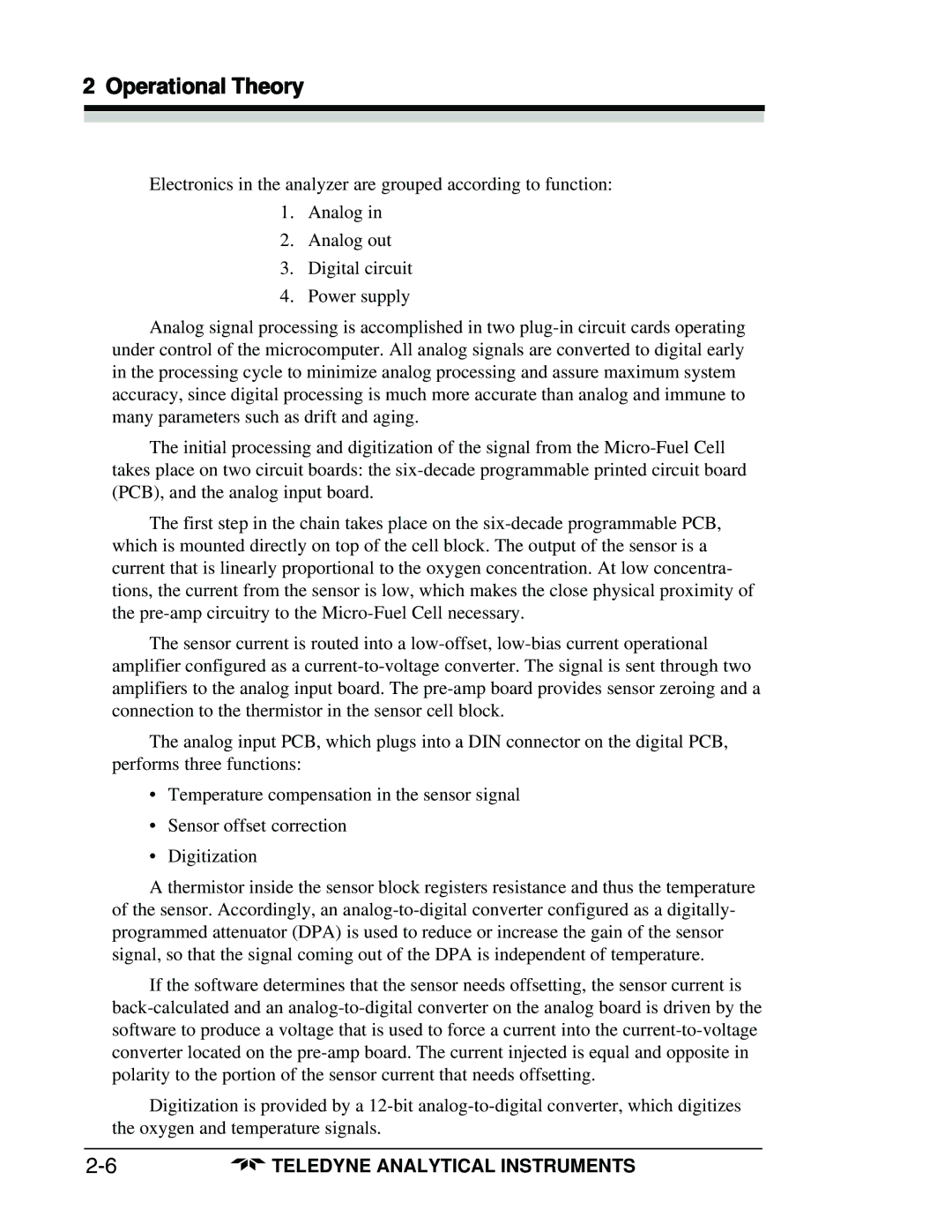Electronics in the analyzer are grouped according to function:
1.Analog in
2.Analog out
3.Digital circuit
4.Power supply
Analog signal processing is accomplished in two plug-in circuit cards operating under control of the microcomputer. All analog signals are converted to digital early in the processing cycle to minimize analog processing and assure maximum system accuracy, since digital processing is much more accurate than analog and immune to many parameters such as drift and aging.
The initial processing and digitization of the signal from the Micro-Fuel Cell takes place on two circuit boards: the six-decade programmable printed circuit board (PCB), and the analog input board.
The first step in the chain takes place on the six-decade programmable PCB, which is mounted directly on top of the cell block. The output of the sensor is a current that is linearly proportional to the oxygen concentration. At low concentra- tions, the current from the sensor is low, which makes the close physical proximity of the pre-amp circuitry to the Micro-Fuel Cell necessary.
The sensor current is routed into a low-offset, low-bias current operational amplifier configured as a current-to-voltage converter. The signal is sent through two amplifiers to the analog input board. The pre-amp board provides sensor zeroing and a connection to the thermistor in the sensor cell block.
The analog input PCB, which plugs into a DIN connector on the digital PCB, performs three functions:
•Temperature compensation in the sensor signal
•Sensor offset correction
•Digitization
A thermistor inside the sensor block registers resistance and thus the temperature of the sensor. Accordingly, an analog-to-digital converter configured as a digitally- programmed attenuator (DPA) is used to reduce or increase the gain of the sensor signal, so that the signal coming out of the DPA is independent of temperature.
If the software determines that the sensor needs offsetting, the sensor current is back-calculated and an analog-to-digital converter on the analog board is driven by the software to produce a voltage that is used to force a current into the current-to-voltage converter located on the pre-amp board. The current injected is equal and opposite in polarity to the portion of the sensor current that needs offsetting.
Digitization is provided by a 12-bit analog-to-digital converter, which digitizes the oxygen and temperature signals.
2-6 | TELEDYNE ANALYTICAL INSTRUMENTS |

